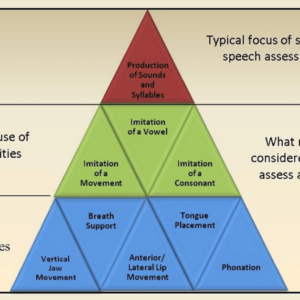Improve Diagnostic Accuracy by Understanding the Numbers Behind Our Tests
$15.00

Course Type: Video – 1 hour
ASHA Course Code: Developmental Language Disorders – 3010
Have you ever asked yourself why we use 1 or 1.5 standard deviations below the mean as a cut-point to guide our decisions? What is the importance of the confidence interval?
Yet, we frequently use standardized tests to guide our diagnostic decisions. In this workshop, we share what the test statistics mean and why we should reconsider this approach.
Additional Information
| Population | Adult, Early Childhood, School Age |
|---|---|
| Duration | 1 hour |
| Credit | .1 Continuing Education Unit |
| Topics | Evaluations |
| Format | Video |
Financial Disclosure: Ellen Kester, Ph.D., CCC-SLP. Dr. Ellen Kester is the owner of Bilinguistics and receives a salary. Bilinguistics receives royalty payments for online courses.
Non-Financial Disclosure: Ellen Kester does not have any non-financial relationships to disclose.
We frequently use standardized tests to guide our diagnostic decisions. Have you ever asked yourself why we use 1 or 1.5 standard deviations below the mean as a cut-point to guide our decisions? In this workshop, we shared what the test statistics mean and why we should reconsider this approach.
Test developers create tools to help us measure receptive language skills, expressive language skills, speech skills, pragmatic skills, cognition, and so on. As evaluators, we use those tools to guide our diagnostic decisions which, in turn, lead to placement decisions for students. Will a child receive special education services or not? These are big decisions that ride, in part, on the standardized testing tools we choose.
So, we owe it to our students to really understand the tools we use. We need to select tools that give us thorough information about the content area we are testing. We need to understand what the reliability and validity estimates of the test are. Most importantly, we need to use the information provided by the test developers about sensitivity and specificity to adjust our standard practice of using the same cut-point for every test. We’ll also consider how cultural and linguistic diversity can impact test results, and steps we can take to avoid misdiagnosis.
Participants will:
Describe how psychometric properties differ between language tests and speech tests.
Describe what sensitivity and specificity estimates mean.
List three important properties to look for when selecting an assessment measure.
Describe two extra steps examiners can make to address the cultural and linguistic differences
between the normative sample and the students being tested.
Time-Ordered Agenda:
05 minutes: Introduction to the Topic and Current Challenges
25 minutes: Psychometric Properties and Selecting Effective Tools
25 minutes: Addressing Cultural and Linguistic Differences
05 minutes: Conclusion/Questions
Need CEUs?

 Share
Share
 Tweet
Tweet
 LinkedIn
LinkedIn
 Pin
Pin
 Email
Email





